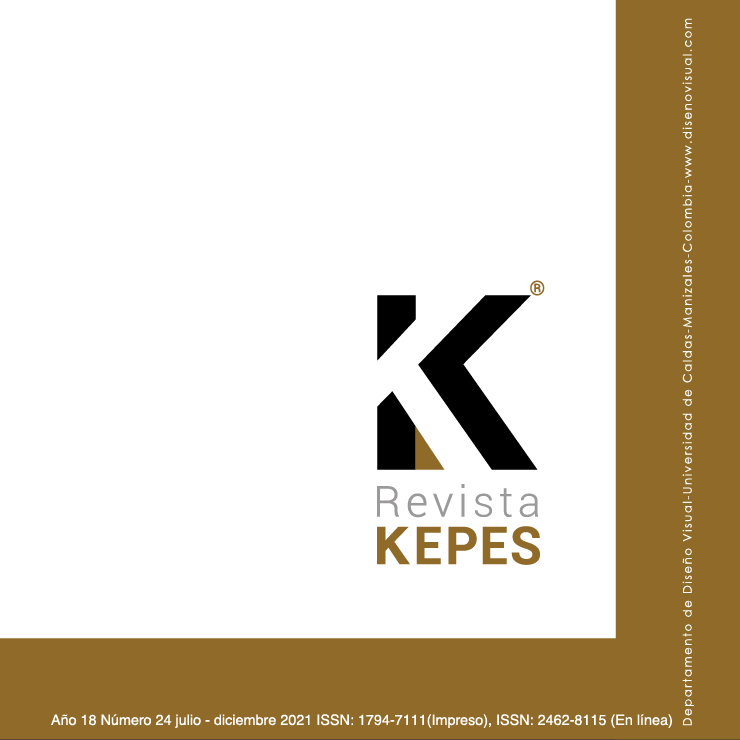Authors
Abstract
This work takes as its main object the ontological debate about the design of virtual worlds. Taking Martin Heidegger’s analytic reflection methodology, a reformulation of the relationships between the receiver and the video games designer is proposed trying to overcome the usual metaphysical split between subject and object. Under the reading of this work, the designer of virtual worlds is responsible for configuring complex interactions —strictly, "plexuses of entities"— from which the meaning of the video game world emerges, just as they are thematized within the "existential analytics" outlined especially in Being and Time. However, this work also proposes a critical reading of the application of certain concepts of the same system: the difficulty of "designing deaths", the nature of anguish as a design error (bug), but above all, the difficulty of considering the receiver of the design as something more than a "gamer" but, rather, as a receiver of meanings given by the designer. It is concluded, therefore, that the design in videogames depends as a privilege, on relations of pragmaticity (zeughaftigkeit) united in a complex “functional arrangement” (bewandtnis) in order to create meaning.
References
Contreras, F. R. (2019). Estudio filosófico sobre la mirada estética en el diseño. Kepes, 16(19), 11-38.
Cremin, C. (2016). Exploring Videogames with Deleuze and Guattari: Towards an affective theory of form. Routledge.
Descartes, R. (2011). Meditaciones metafísicas. Gredos.
Dreyfus, H. L. (1992). What Computers Still Can’t Do. The MIT Press.
Eilenberger, W. (2019). Tiempo de magos: La gran década de la filosofía (1919-1929). Taurus.
Escudero, A. (2013). El tiempo del sujeto: Un diagnóstico de la crisis de la modernidad. Arena Libros.
Escudero, A. (2017). Heidegger en el laberinto de la modernidad. Arena Libros.
Fernández, J. (2015). Pixelar a Platón. Micromegas.
Frasca, G. (2001a). Ephemeral Games: Is It Barbaric to Design Videogames after Auschwitz? Cybertext Yearbook 2000, 172-182.
Frasca, G. (2001b). Rethinking agency and immersion: video games as a means of consciousnessraising. Digital Creativity, 12(3), 167-174.
Gallastegui, S. (2018). Inmersión y emersión en los juegos digitales. Un modelo de análisis. Icono14, 16(2), 51-73.
Gil, S. y Rodríguez, A. (2017). Y seréis como Dios: la construcción de divinidades ludoficcionales en el contexto transhumanista. Icono14, 15, 211-234.
Heidegger, M. (1977). Gesamtausgabe. Band 52. Sein und Zeit. Vittorio Klostermann.
Heidegger, M. (1995). Caminos de bosque. Alianza Editorial.
Heidegger, M. (1999). Introducción a la filosofía. Cátedra.
Heidegger, M. (2000). Tiempo y ser. Tecnos.
Heidegger, M. (2002). Interpretaciones fenomenológicas sobre Aristóteles. Indicación de la situación hermenéutica. Informe Natorp. Trotta.
Heidegger, M. (2005). La idea de la filosofía y el problema de la concepción del mundo. Herder.
Heidegger, M. (2009). Ser y tiempo. Trotta.
Heidegger, M. (2013). Seminarios de Zollikon. Herder.
Husserl, E. (1962). Ideas relativas a una fenomenología pura y una filosofía fenomenológica (Libro 1). Fondo de Cultura Económica.
Jayemanne, D. (2003). Spielraum: games, art and cyberspace. Melbourne International Digital Arts and Culture Conference, 1.
Jenkins, H. (2004). Game design as narrative architecture. En N. Wardrio-Fruin y P. Harrigan (Eds.), First person: new media as story, perfromance and game (pp. 118-130). The MIT Press.
Juul, J. (2013). The Art of Failure: An Essay on the Pain of Playing Video Games. The MIT Press. Lewis, C., Whitehead, J. y Wardrip-Fruin, N. (2016). What went wrong: a taxonomy of video game bugs. ICSE ’16: Proceedings of the 38th International Conference on Software Engineering Companion, 108-115.
Leyte, A. (2005). Heidegger. Alianza Editorial. Loriguillo-López, A. y Sorolla-Romero, T. (2015). “Vive, muere, repite”: El blockbuster ante el desafío interactivo. Fonseca, Journal of Communication, 11, 118-132.
Losada, R. (2014). La tecnología 3D como herramienta para explorar los escenarios arquitectónicos contemporáneos. Atalante, 17, 23-29.
McHale, B. (1987). Postmodernist fiction. Routledge. Michaildis, L., Balaguer-Ballester, E. y He, X. (2018). Flow and immersion in video games: The aftermath of a conceptual challenge. Frontiers in Psychology, 9.
Monchán, J. (2015). Emergencia en el apocalipsis zombi. Mecanismos para la creación de narrativas emergentes en DayZ. adComunica. Revista Científica de Estrategias, Tendencias e Innovación en Comunicación, 9, 185-192. http://dx.doi.org/10.6035/2174-0992.2015.9.12
Navarrete, J. L., Pérez, J. P. y Gómez, F. J. (2014). El pensamiento abductivo como fundamento ontológico de los videojuegos. Icono14, 2, 416-440.
Navarro, V. (2016). Libertad dirigida: Una gramática del análisis y diseño de videojuegos. Shangrila.
Navarro, V. (2019). Ser todo, ser nada: La subjetividad en el videojuego más allá del avatar. Tropelías, 31, 156-173.
Pardo, J. L. (2004). La Regla del juego: sobre la dificultad de aprender filosofía. Galaxia Gutenberg.
Pérez, Ó. (2012). El Lenguaje videolúdico: análisis de la significación del videojuego. Lartes.
Planells, A. J. (2015). Videojuegos y mundos de ficción. Cátedra.
Portillo, J. (2017). Ontología, funciones y discurso en el videojuego. Revista Humanidades, 7(1), 1-22.
Ramírez, M. del M. y Navarrete-Cardero, L. (2017). Experiencias innovadoras en dispositivos interactivos aplicados a los videojuegos: el caso de Oculus Rift. AdComunica. Revista Científica de Estrategias, Tendencias e Innovación En Comunicación, 13, 223-242.
Ramírez, M. T. (2008). Intencionalidad y virtualidad: Merleau-Ponty filósofo de la realidad virtual. Investigaciones Fenomenológicas, 1, 223-246.
Rodríguez, C. M. y Martínez, H. F. (2019). Dimensiones virtuales de la ciudad: apropiación urbana mediada por el uso de la aplicación digital Pokemon Go! Kepes, 19, 317-345.
Rodríguez, R. (2006). Heidegger y la crisis de la época moderna. Editorial Síntesis.
Rodríguez, A. (2017a). El desprecio, la técnica y el lenguaje: sobre el rechazo de Heidegger a la expresión cinematográfica. Cultura, Lenguaje y Representación, 18, 27-43.
Rodríguez, A. (2017b). La nada como categoría ontológica en el videojuego. Análisis de Sad Satan. Fonseca, Journal of Communication, 14, 203-214.
Siabra, J. A. (2012). Bosquejo de una metafísica del videojuego. Círculo Rojo.
Trilles, K. P. (2009). Fenomenología y realidad virtual: el reto de un nuevo mundo. Arbor, CLXXXV(736), 427-435. http://doi.org/10.3989/arbor.2009.i736.291
Vattimo, G. (1986). Introducción a Heidegger. Gedisa.
Von Herrmann, F. W. (2013). La “segunda mitad” de Sery Tiempo. Sobre los problemas fundamentales de la Fenomenología de Heidegger. Lógica y verdad en la Fenomenología de Heidegger y de Husserl. Trotta.

 pdf (Español (España))
pdf (Español (España))
 FLIP
FLIP






















